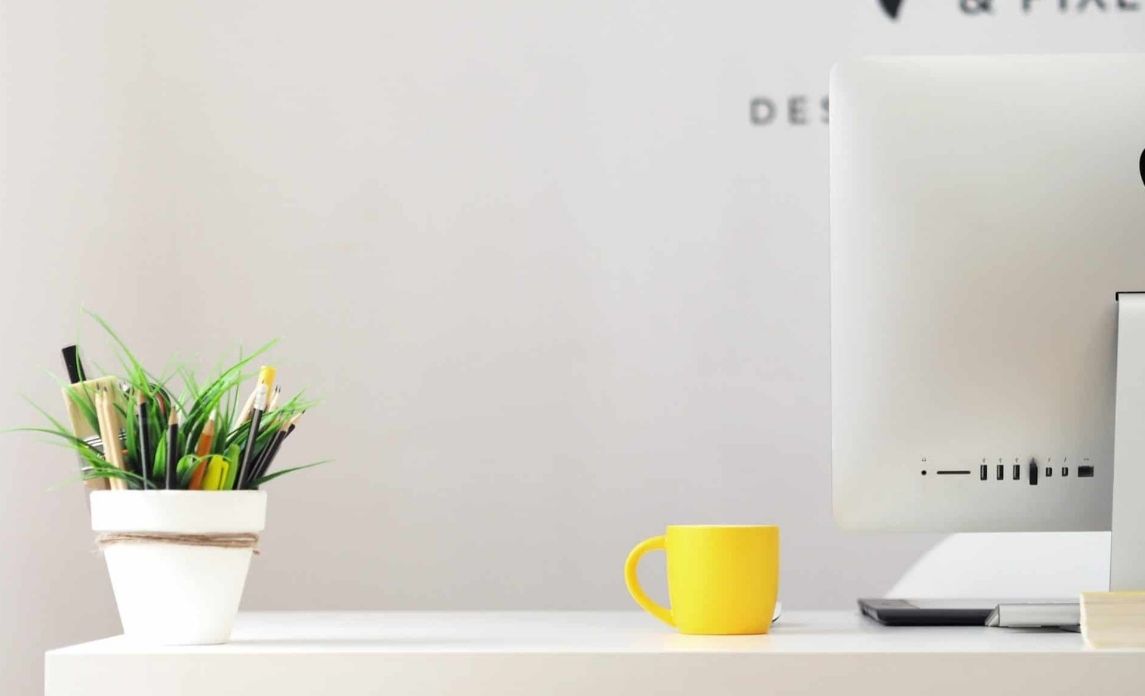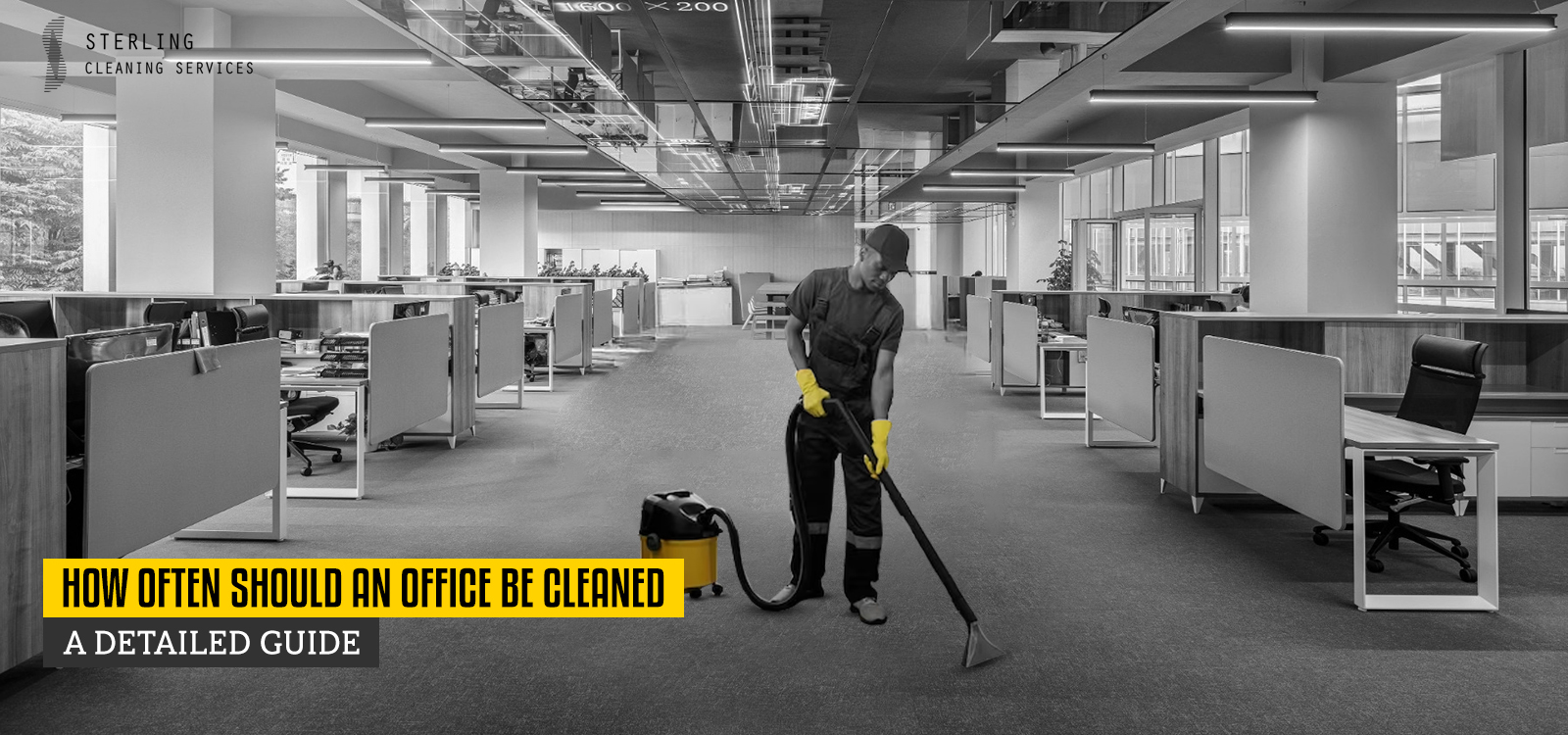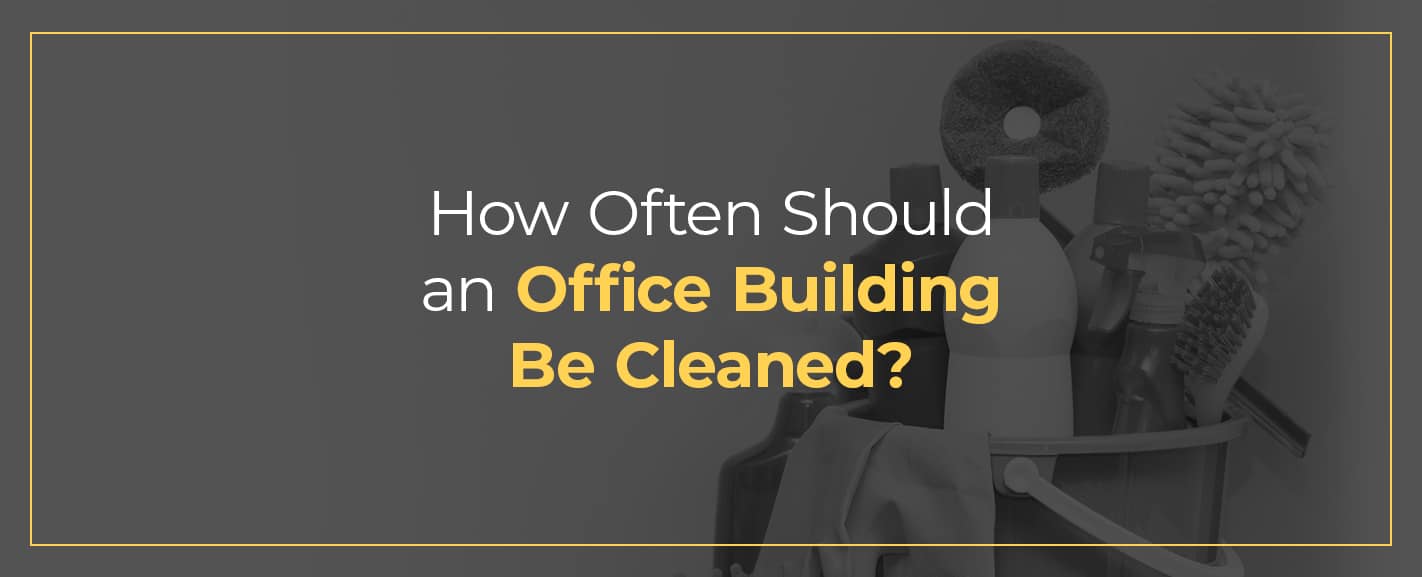An office should be vacuumed at least once a week. High-traffic areas may need more frequent cleaning.
A clean office boosts productivity and morale. Dust and dirt can affect indoor air quality, leading to health issues. Regular vacuuming helps maintain a healthy work environment. But, how often is enough? The answer depends on several factors. The office size, number of employees, and foot traffic all play a role.
In some cases, daily vacuuming might be necessary. In others, weekly might suffice. Understanding the right frequency can keep your office tidy and your team happy. This blog will explore the factors that influence the need for vacuuming and offer practical advice. Stay tuned to learn how to keep your office spotless.
Importance Of Clean Offices
Maintaining a clean office is crucial for several reasons. A clean workspace not only looks appealing but also promotes a healthier and more productive environment. One of the key tasks in keeping an office clean is regular vacuuming. But, how often should an office be vacuumed? Understanding the importance of clean offices can help in making this decision.
Get The Best Office Cleaning Service – Click Here
Health Benefits
A clean office environment plays a vital role in ensuring the health and well-being of employees. Regular vacuuming can significantly reduce the amount of dust, allergens, and bacteria present in the office. This, in turn, can lead to several health benefits:
- Reduced Allergies: Dust and pollen can trigger allergies. Vacuuming helps in keeping these allergens at bay.
- Improved Air Quality: Cleaner carpets and floors mean fewer airborne particles, leading to better air quality.
- Lower Risk of Illness: Regular cleaning can reduce the spread of germs and bacteria, leading to fewer sick days.
Furthermore, a clean office can prevent the buildup of mold and mildew, which can cause respiratory issues. Here’s a quick comparison of health benefits between a regularly vacuumed office and a rarely vacuumed office:
| Health Aspect | Regularly Vacuumed Office | Rarely Vacuumed Office |
| Allergy Symptoms | Low | High |
| Air Quality | Good | Poor |
| Illness Spread | Reduced | Increased |
Regular vacuuming is essential for maintaining a healthy workspace. It ensures that employees can work in a clean and safe environment.
Productivity Boost
Clean offices don’t just promote health; they can also enhance productivity. A tidy workspace can have a positive impact on employees’ mental well-being and efficiency. Here’s how:
- Reduced Distractions: A clean environment means fewer distractions. Employees can focus better on their tasks without clutter or dirt catching their attention.
- Enhanced Morale: Working in a clean office boosts morale. Employees feel valued and cared for, which translates into higher productivity.
- Better Organization: Regular cleaning and vacuuming encourage better organization. Employees are more likely to keep their own spaces tidy in a clean environment.
Moreover, a clean office can leave a positive impression on clients and visitors. This can lead to better business opportunities and partnerships.
Consider this simple table showing the productivity impact of clean vs. dirty offices:
| Productivity Factor | Clean Office | Dirty Office |
| Focus and Concentration | High | Low |
| Employee Morale | Positive | Negative |
| Organization | Efficient | Chaotic |
Regular vacuuming is a small task that yields significant benefits. It ensures a cleaner, healthier, and more productive office environment.

Factors Influencing Frequency
How often should an office be vacuumed? The frequency depends on various factors. Keeping the office clean is crucial for a healthy work environment. Below, we will explore the main factors that influence how often an office needs vacuuming.
Foot Traffic
The number of people walking through the office affects how often you should vacuum. High foot traffic means more dirt and debris. This can make the office look dirty quickly. Areas like the entrance, hallways, and meeting rooms often see the most traffic.
- High Foot Traffic Areas: These include entrances, hallways, and common areas. These spaces should be vacuumed daily. This keeps dirt from spreading.
- Medium Foot Traffic Areas: Think of areas like individual workspaces. Vacuum these areas two to three times a week. This will help maintain cleanliness.
- Low Foot Traffic Areas: These are less frequented spaces, like storage rooms. Vacuuming once a week should be enough.
Here is a simple table to summarize:
| Area Type | Foot Traffic Level | Vacuum Frequency |
| Entrances, Hallways | High | Daily |
| Workspaces | Medium | 2-3 times a week |
| Storage Rooms | Low | Weekly |
Type Of Flooring
The type of flooring in the office also impacts vacuuming frequency. Different materials require different care. Carpets, for example, trap more dirt and need more frequent cleaning.
- Carpeted Floors: These floors trap dust, allergens, and dirt. Vacuuming carpets at least three times a week is recommended. High traffic carpeted areas should be vacuumed daily.
- Hardwood Floors: These floors do not trap dirt like carpets. Vacuuming once or twice a week is usually enough. However, they may need sweeping more often to keep them looking clean.
- Tile or Vinyl Floors: These surfaces are easy to clean. Vacuuming once a week should suffice. Regular sweeping or mopping can help maintain their appearance.
Here is a simple table to summarize:
| Floor Type | Cleaning Needs | Vacuum Frequency |
| Carpet | High | 3 times a week |
| Hardwood | Medium | 1-2 times a week |
| Tile/Vinyl | Low | Weekly |
Daily Vacuuming Needs
Maintaining a clean office is essential for a productive work environment. Vacuuming is a key part of this. But how often should an office be vacuumed? Daily vacuuming can make a significant difference. This can prevent dust build-up, improve air quality, and create a pleasant workspace.
Get The Best Office Cleaning Service – Click Here
High-traffic Areas
High-traffic areas in an office require daily vacuuming. These places see the most foot traffic and accumulate dirt quickly. Examples include:
- Entrance areas
- Hallways
- Reception areas
Daily vacuuming in these areas helps to maintain cleanliness and hygiene. It also extends the life of the carpet. Dirt and debris can wear down carpet fibers over time. Regular cleaning keeps this from happening.
Consider the following table for high-traffic areas:
| Area | Vacuuming Frequency |
| Entrance | Daily |
| Hallways | Daily |
| Reception | Daily |
Additionally, use a high-quality vacuum with a HEPA filter. This ensures that dust and allergens are effectively removed. Keeping high-traffic areas clean enhances the overall appearance of the office. It also creates a welcoming environment for both employees and visitors.
Common Spaces
Common spaces in an office also benefit from daily vacuuming. These areas include:
- Break rooms
- Conference rooms
- Open office spaces
Daily vacuuming in these spaces helps to reduce allergens and dust. It also promotes a healthier work environment. Employees spend a lot of time in common spaces. Keeping these areas clean can improve overall morale and productivity.
Here’s a suggested vacuuming schedule for common spaces:
| Area | Vacuuming Frequency |
| Break Room | Daily |
| Conference Room | Daily |
| Open Office Space | Daily |
Using a vacuum with strong suction and a good filter is important. This ensures thorough cleaning. Daily vacuuming in common spaces keeps the office looking neat and professional. It also helps to prevent the spread of germs and allergens.
In summary, daily vacuuming in high-traffic and common areas is crucial. It keeps the office clean, healthy, and inviting.
Weekly Vacuuming Routine
Keeping an office clean is crucial for both health and productivity. A weekly vacuuming routine helps maintain a neat workspace. Regular vacuuming prevents dust buildup and allergens, creating a healthier environment. But which areas should be included in this routine?
Offices And Desks
Offices and desks are high-traffic areas that accumulate dust and dirt quickly. A weekly vacuuming routine is essential here. Focus on these key points:
- Under Desks: Dust and debris often collect under desks where it is hard to reach.
- Carpeted Areas: Carpets trap dust and allergens, making regular vacuuming necessary.
- Chair Mats: Vacuum chair mats to prevent dust from spreading.
For a thorough clean, follow these steps:
- Remove any items on the floor around desks.
- Use a vacuum with a HEPA filter for better dust capture.
- Pay special attention to corners and under furniture.
Consider using a vacuum with a crevice tool for hard-to-reach spots. For large offices, dividing the space into sections can make the task more manageable. Remember, a clean workspace leads to better concentration and productivity.
Meeting Rooms
Meeting rooms are another crucial area to include in your weekly vacuuming routine. These spaces host many people, leading to a higher accumulation of dust and dirt. Key areas to focus on include:
- Under Tables: Food crumbs and dust often settle under tables.
- Carpets and Rugs: Regular vacuuming keeps these areas looking clean and presentable.
- Chairs: Dust and dirt can gather on and under chairs.
Follow these steps for an effective clean:
- Move chairs to vacuum under tables thoroughly.
- Use the vacuum’s brush attachment for upholstered chairs.
- Ensure all corners and edges are cleaned properly.
For meeting rooms with heavy foot traffic, consider vacuuming twice a week. A clean meeting room creates a positive impression and ensures a pleasant environment for discussions. Consistency in your cleaning routine is key to maintaining a spotless office.
Monthly Vacuuming Schedule
Keeping an office clean is essential for productivity and health. A clean office can boost morale and reduce illnesses. Many wonder how often an office should be vacuumed. A monthly vacuuming schedule can keep dust and allergens at bay. Let’s explore the benefits of a monthly vacuuming routine and the best practices for different floor types.
Get The Best Office Cleaning Service – Click Here
Deep Cleaning
Regular vacuuming is crucial, but deep cleaning is equally important. Deep cleaning involves reaching areas that daily cleaning might miss. This ensures a thorough removal of dirt and allergens.
A monthly deep cleaning should include:
- Vacuuming under furniture
- Cleaning baseboards and corners
- Using a vacuum with HEPA filters
Deep cleaning can prevent the buildup of dust and dirt, which can cause health issues. For effective deep cleaning, follow these steps:
- Move furniture to access hidden areas.
- Vacuum upholstery and curtains.
- Use attachments for corners and edges.
Consider hiring professionals for deep cleaning. They have the tools and experience to ensure a thorough job. A clean office can improve air quality and reduce the spread of germs.
Carpets Vs. Hard Floors
Different floor types require different cleaning approaches. Carpets and hard floors have unique needs when it comes to vacuuming.
Carpets:
- Trap dust and allergens
- Need frequent vacuuming
- Require deep cleaning to remove embedded dirt
Hard Floors:
- Show dirt and dust easily
- Need sweeping and vacuuming
- Require occasional mopping for a thorough clean
Comparing Carpets and Hard Floors:
| Aspect | Carpets | Hard Floors |
| Frequency | Weekly | Weekly |
| Deep Cleaning | Monthly | Every 2-3 months |
| Tools Needed | HEPA Vacuum | Vacuum and Mop |
Understanding the needs of your office floors can help maintain a clean and healthy environment. Whether you have carpets or hard floors, regular vacuuming is key. Adopting a monthly vacuuming schedule can ensure your office stays fresh and inviting.

Seasonal Considerations
Keeping an office clean is crucial for a healthy work environment. Understanding how often an office should be vacuumed depends on many factors, including seasonal changes. Different seasons bring unique challenges that affect the cleanliness of your workspace. Proper vacuuming schedules can help in maintaining a pristine office throughout the year.
Allergy Seasons
Allergy seasons can be a significant concern for office cleanliness. Pollen, dust, and other allergens tend to be more prevalent during spring and fall. During these times, it is essential to increase the frequency of vacuuming to ensure a healthy work environment.
Here are some tips for managing vacuuming during allergy seasons:
- Increase Vacuuming Frequency: Consider vacuuming high-traffic areas daily and other areas at least twice a week.
- Use HEPA Filters: High-efficiency particulate air (HEPA) filters can trap smaller particles that regular filters might miss.
- Focus on Entry Points: Make sure to vacuum entryways and common areas where allergens are likely to accumulate.
Maintaining a clean office during allergy seasons can help reduce the symptoms of allergies among employees. A clean workspace can lead to improved productivity and overall well-being.
Winter Maintenance
Winter brings its own set of challenges. Snow, mud, and salt from outside can easily be tracked into the office, leading to dirty carpets and floors. Regular vacuuming during winter is essential to maintain a clean and safe environment.
Here are some winter maintenance tips:
- Vacuum Entry Mats Frequently: Entry mats can capture a lot of dirt and moisture. Vacuum them daily to prevent the spread of debris.
- Use Wet/Dry Vacuums: These vacuums can handle the moisture and mud brought in from outside more effectively.
- Schedule Deep Cleaning: Consider scheduling a deep carpet cleaning at the beginning and end of winter to remove any deep-seated dirt and grime.
A clean office during winter can prevent slip hazards and keep the workspace inviting and professional. Regular vacuuming helps to maintain the integrity of the office flooring and contributes to a healthier environment for employees.
Professional Cleaning Services
Maintaining a clean office is important for the health and productivity of employees. One key task is vacuuming. But how often should an office be vacuumed? Professional cleaning services can help answer this question. They bring expertise, equipment, and efficiency. They ensure your office stays clean and inviting. Let’s explore the benefits and timing of hiring professional cleaners for your office vacuuming needs.
When To Hire
Deciding when to hire professional cleaning services depends on various factors. These include the size of your office, the number of employees, and the nature of your business.
Consider hiring professionals if:
- Your office has high foot traffic.
- You have employees with allergies or respiratory issues.
- Your office space is large and difficult to clean.
- You need consistent and thorough cleaning.
High foot traffic areas, such as lobbies and conference rooms, need frequent vacuuming. For a small office with low traffic, weekly vacuuming might be enough. In contrast, a large office with many employees might need daily vacuuming.
Professional cleaners can also help during special events or seasonal deep cleaning. For example, after an office party or during spring cleaning. They have the right tools and skills to handle such tasks efficiently.
Table: Frequency of Vacuuming Based on Office Size
| Office Size | Foot Traffic | Recommended Frequency |
| Small | Low | Weekly |
| Medium | Moderate | Twice a Week |
| Large | High | Daily |
Benefits Of Professionals
Professional cleaning services offer many benefits. They bring experience and efficiency. They use advanced equipment and cleaning products. This ensures a thorough and deep clean.
Key benefits include:
- Expertise: Professionals know the best methods for different surfaces and materials.
- Time-saving: They work quickly and efficiently, saving you time and effort.
- Consistency: Regular cleaning schedules keep your office consistently clean.
- Healthier Environment: They remove allergens, dust, and dirt, improving air quality.
- Enhanced Appearance: A clean office looks professional and welcoming.
Professional cleaners also use eco-friendly products. This reduces the impact on the environment. They follow industry standards, ensuring safe and effective cleaning.
Hiring professionals can:
- Boost employee morale.
- Reduce sick days.
- Improve productivity.
In summary, professional cleaning services provide expertise and efficiency. They ensure your office remains clean and healthy. This ultimately enhances the work environment and boosts productivity.

Diy Vacuuming Tips
Keeping an office clean and tidy can boost productivity and create a pleasant work environment. Regular vacuuming is crucial for maintaining cleanliness, but it can be challenging to determine the right frequency. Here are some DIY vacuuming tips to help you keep your office spotless.
Get The Best Office Cleaning Service – Click Here
Choosing The Right Vacuum
Choosing the right vacuum for your office is essential. Not all vacuums are created equal, and the type you select will depend on the office size and the type of flooring. Here are some key points to consider:
- Type of flooring: Carpeted offices need vacuums with strong suction and rotating brushes. For hardwood or tile floors, choose vacuums with soft bristles or hard floor settings.
- Office size: For large offices, opt for a vacuum with a larger dustbin capacity. Small offices might benefit from compact, lightweight models.
- Filtration system: High-efficiency particulate air (HEPA) filters are ideal for capturing dust and allergens, making the air cleaner.
- Noise level: Consider vacuums with low decibel levels to avoid disturbing employees during work hours.
Below is a table comparing different types of vacuums suitable for office use:
| Vacuum Type | Best For | Key Features |
| Upright | Carpeted floors | Strong suction, large dustbin, HEPA filter |
| Canister | Hardwood/tile floors | Soft bristles, maneuverability, quiet operation |
| Handheld | Small spaces | Compact size, portability, versatile attachments |
| Robotic | Automated cleaning | Programmable, low profile, suitable for all floor types |
Effective Techniques
Using effective vacuuming techniques can enhance the cleanliness of your office. Here are some tips to ensure thorough cleaning:
- Divide the office into sections: Clean one section at a time to ensure no area is missed.
- Use slow, overlapping strokes: This helps in picking up more dirt and debris from the carpet or floor.
- Focus on high-traffic areas: These areas accumulate more dirt and should be vacuumed more frequently.
- Empty the vacuum regularly: A full dustbin reduces suction power and efficiency.
- Utilize attachments: Use different attachments for corners, edges, and upholstery to achieve a comprehensive clean.
Remember to vacuum under furniture and in less obvious places like behind doors. Keeping a consistent vacuuming schedule, such as twice a week for high-traffic areas and once a week for low-traffic areas, can maintain a clean office environment. Implementing these effective techniques will make your DIY vacuuming efforts more efficient and successful.
Signs It’s Time To Vacuum
Maintaining a clean office is essential for both aesthetics and health. But how often should an office be vacuumed? Knowing the signs it’s time to vacuum can help you keep your workspace clean and inviting. Here are some key indicators that your office needs a good vacuuming.
Visible Dirt
One of the most obvious signs it’s time to vacuum is visible dirt. If you can see dust and debris on the floor, it’s a clear indicator that vacuuming is overdue. Here are some common signs of visible dirt:
- Dust accumulation: Dust can settle on carpets and floors, making them look dirty.
- Footprints: Footprints on carpets and hard floors are a sign that dirt is being tracked in.
- Paper and crumbs: Small bits of paper, food crumbs, and other debris can make your office look untidy.
To keep your office looking its best, vacuum regularly. A good rule of thumb is to vacuum high-traffic areas daily and less-used areas at least once a week. Here’s a simple table to guide your vacuuming schedule:
| Area | Frequency |
| High-Traffic Areas | Daily |
| Moderate-Traffic Areas | Twice a Week |
| Low-Traffic Areas | Weekly |
Odors And Allergies
Unpleasant odors and allergy symptoms can also indicate it’s time to vacuum. If your office has a musty smell, it could be due to dust and dirt in the carpet. Here are some signs to watch for:
- Musty odors: A stale or musty smell often means there’s trapped dirt in the carpet fibers.
- Increased sneezing: Dust and allergens can cause sneezing and other allergy symptoms.
- Watery eyes: Allergens in the carpet can irritate eyes, causing them to water.
To address these issues, vacuum regularly and consider using a vacuum with a HEPA filter. This type of filter can trap smaller particles, reducing allergens in the air. A consistent vacuuming schedule can help maintain a fresh-smelling and allergy-free office environment.
Frequently Asked Questions
How Often Should Office Carpets Be Vacuumed?
Office carpets should be vacuumed at least once a week. High-traffic areas may need more frequent cleaning.
What Are The Benefits Of Regular Office Vacuuming?
Regular vacuuming keeps the office clean, reduces allergens, and extends carpet life. It also creates a healthier workspace.
Can Vacuuming Reduce Office Dust And Allergens?
Yes, vacuuming helps remove dust, dirt, and allergens from the office. This improves air quality and hygiene.
Conclusion
Regular office vacuuming ensures a clean and healthy work environment. High-traffic areas need frequent attention. Twice a week is often ideal. For less busy spaces, weekly vacuuming may suffice. Remember, cleanliness boosts productivity. A clean office reflects professionalism. It also helps maintain employees’ well-being.
Keep a consistent cleaning schedule. This prevents dust and allergens from accumulating. Make office cleanliness a priority. It pays off in the long run. Happy employees work better. So, don’t overlook regular vacuuming. A clean office is a happy office.
Stay proactive with your cleaning routine. Your team will thank you.
